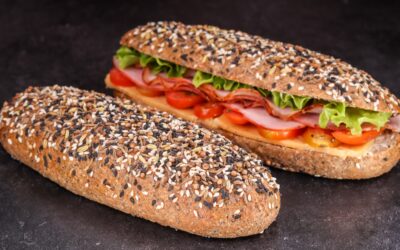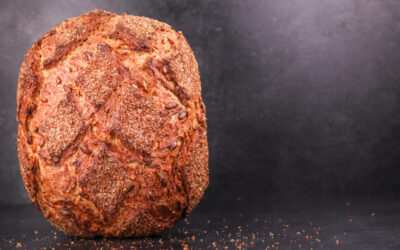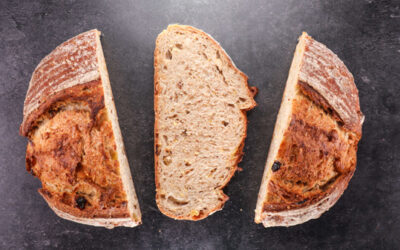This is my second einkorn recipe. With some lessons learned from the first one I thought I’d try my hand at some rolls. This time enriched with egg, butter, syrup, and seeds.
To me einkorn bread seems like a lighter (and easier to handle) version of rye bread. Of course, it tastes completely different, but the texture reminds me of it. Both have very weak gluten.
Before I try my hand at scalding einkorn (which is the next step), I wanted to see how it would react when enriched with egg and fat. The crumb of these rolls is definitely different from the loaf I posted recently. It is tighter, but softer at the same time. The crumb of the loaf was moist, but not as delicate.
The seeds I chose worked quite well with the flavour and texture of the roll. All the ingredients make a nice little rustic bread in the end, and nothing seems out of place.
These rolls are certainly full of goodness. If you don’t want to use the egg, then replace it with 10g butter and 35g water.
This recipe makes 6 small rolls.
Watch the video down below for detailed instructions.
Ingredients
For the dough –
350g (12.3oz) wholegrain einkorn flour
3.5g (0.12oz) instant dry yeast or 4.2g (0.15oz) active dry yeast or 10.5g (0.37oz) fresh yeast
7g (0.24oz) salt
1 egg (50g; 1.75oz)
25g (0.9oz) soft butter
20g (0.7oz) syrup for sweetening *optional
40g (1.4oz) seeds
175g (6.15oz) water*
*To learn more about no-knead bread dough temperature control click here.
If you are using active dry yeast, then you may need to let it sit in the water for 10 minutes before adding the other ingredients or else it could take a lot longer to raise the dough.
If you are curious about why the dough contains butter, egg, and syrup, click the links to learn more about the effects those ingredients have on bread dough.
For the topping –
30g (1oz) of the dough mixed with 30g (1oz) water.
20g (0.7oz) seeds
I used a mix of aniseed, caraway, nigella, fennel, black & white sesame keeping the most aromatic ones to a minimum as to not overpower the taste of the other ingredients.
Method
- In a large bowl combine the water, yeast, salt, syrup, egg, and seeds. Mix well to dissolve the salt completely. Add the flour and mix to a dough. *Desired dough temperature 25C (77F). If your dough is warmer, then it will ferment more rapidly. If it is cooler, then it will take longer. Adjust proofing time accordingly.
- Pinch off 30g (1oz) of the dough and whisk it up with 30g (1oz) water to make the topping paste.
- Cover both the dough and the paste and leave to ferment for 2 hours.
- Divide the dough into 6 equal pieces and shape into balls.
- Place on a greased baking tray. Give the topping a mix.
- Final proof 1 hour. During this time pre-heat the oven to 180C (355F) fan on or 200C (390F) fan off.
- Brush the dough balls with the paste and sprinkle with the seeds.
- Bake for 20 minutes.
Leave to cool down and enjoy!
Keep in mind that the conditions in each kitchen are different, so fermentation times may vary for you. It is up to the baker to control the bread and react accordingly.
Your oven may be different too, so your baking time may vary.
Watch The Video Here



